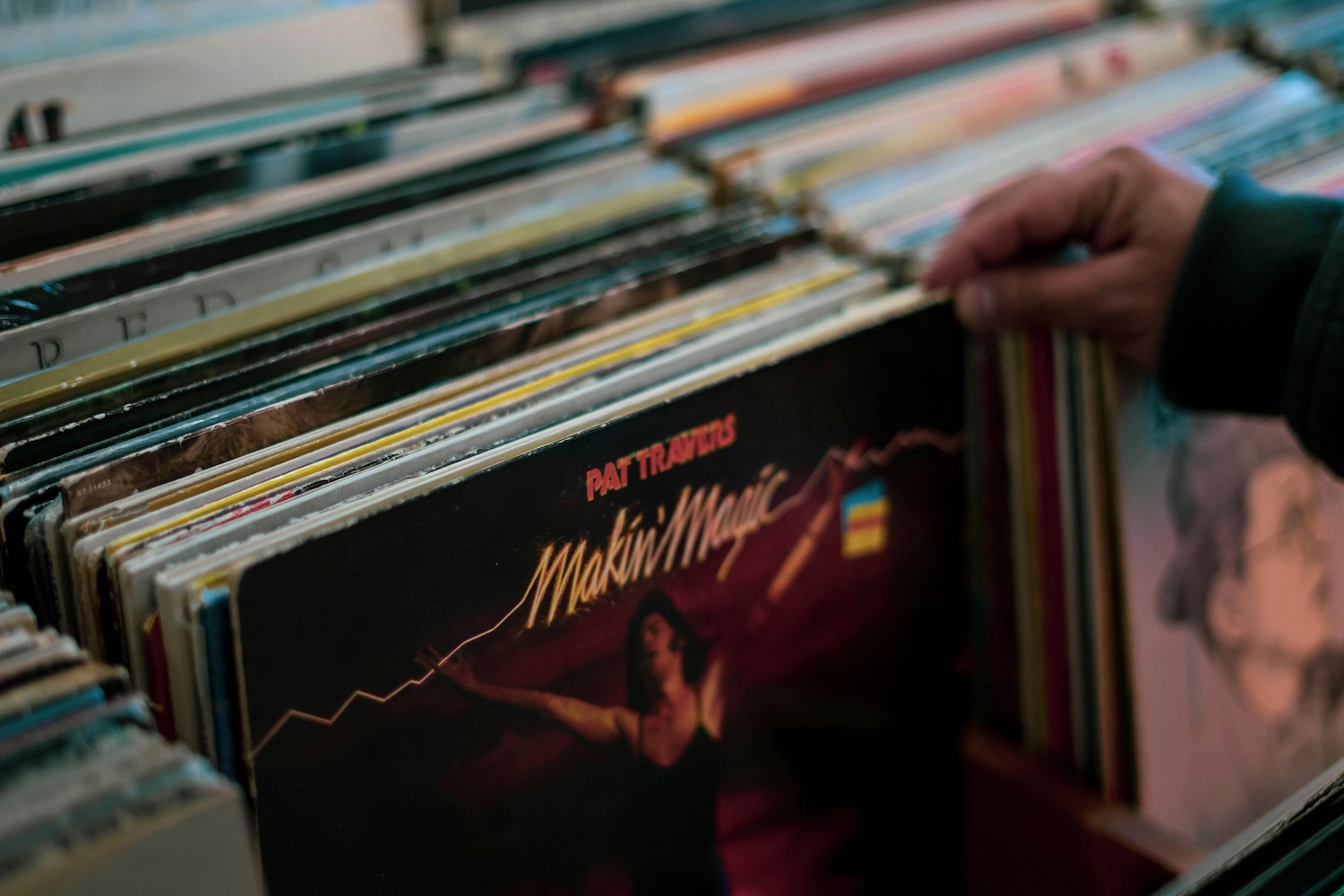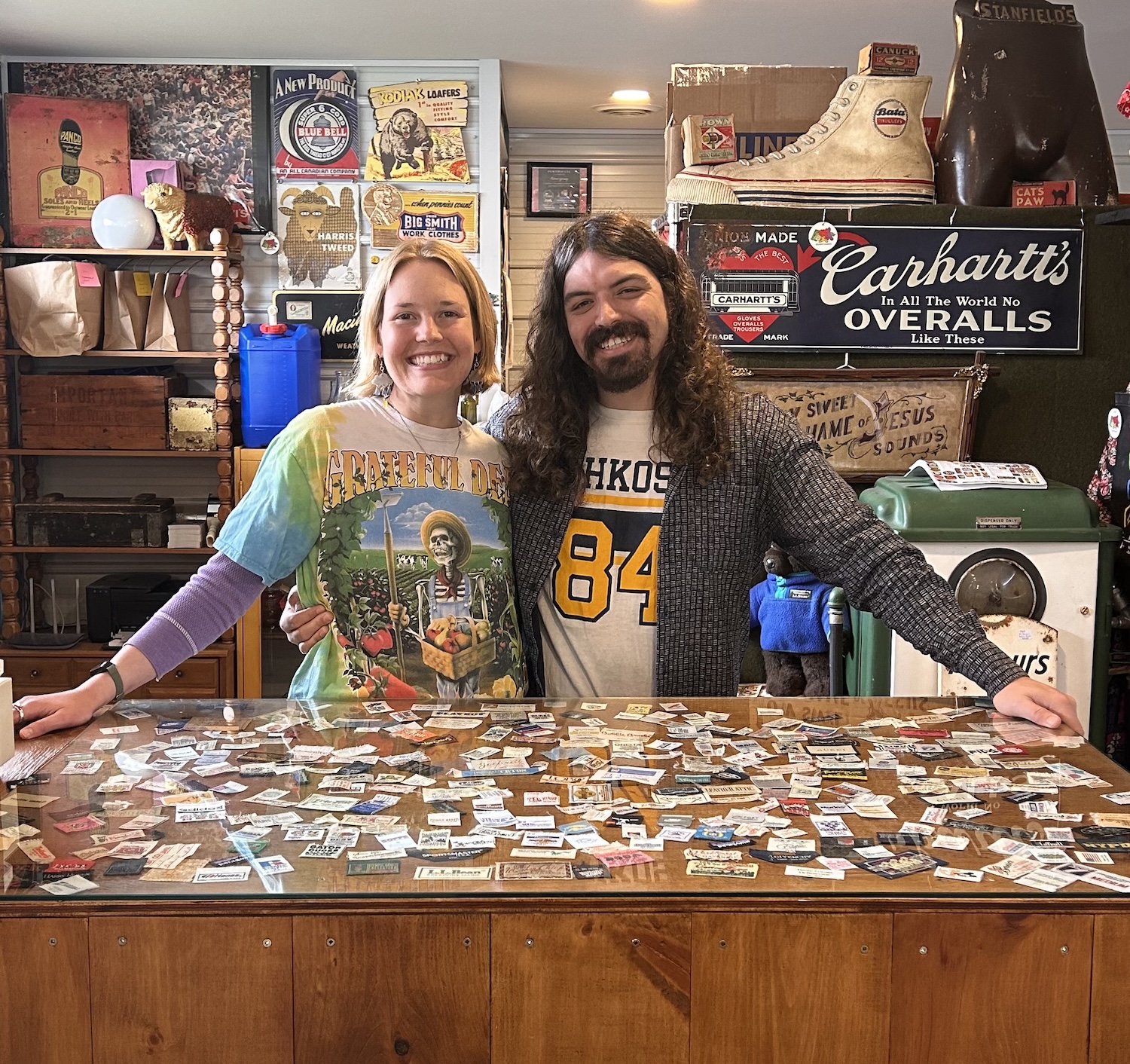
Secondhand first: Our takeaways for buyers and sellers from the 2025 Resale Report
Online resale is growing, secondhand shopping is getting more social and more highlights from the annual thredUP survey — plus, what buyers and sellers can do about it all
If it feels like every day there’s someone in your world waxing on about what they got while thrifting, that’s because the secondhand market is growing at a rapid pace, according to a new study.
And that interest is going to keep snowballing in light of tariffs and increasing consumer appetite.
Online secondhand retailer thredUP recently released its 2025 Resale Report, which is one of the few benchmark surveys available on secondhand buying and selling.
The report estimates the global secondhand apparel market will be worth $367 billion by 2029. It’s a slightly softer projection than what they published in last year's survey, but still, it is outsized growth.
The size of the global secondhand market grew 15 per cent in 2024, and secondhand made up for nine per cent of consumer spending on all apparel worldwide.
By next year, the global secondhand apparel market will be worth 32 per cent more than predicted in 2022’s report.
This is the 13th annual edition of the Resale Report, which polled over 3,000 U.S. adults and 50 fashion retailers and brand executives in January and February 2025 with the help of retail analytics firm GlobalData.
Two caveats about this report. First is that it delineates between secondhand and resale, with resale meaning curated products primarily sold online, and secondhand representing the overall used apparel market, including resale and thrift/donation.
I normally use these terms interchangeably, but will use them as reported in the context of this article.
For example, in the U.S., secondhand apparel sales are advancing five times faster than the overall retail clothing market. That means sales from both resale and thrift/donation.
Whereas online purchases account for 88 per cent of total resale spend. That data is limited to the people shopping from curated sites.
And second, the report focuses largely on apparel because that’s thredUP’s business. Home decor, furniture and other categories don’t get measured widely.
That being said, the Resale Report remains one of our best indicators of how the overall vintage and resale market is doing.
Here, I’m offering my take on some of the findings from the report, and identifying opportunities for vendors in the space.
Let’s get into it.
Tariffs: a possible positive for the secondhand market
Make no mistake: Tariffs will overall have a negative impact on the secondhand space, particularly for businesses that import cross-border. The threat of the U.S. de minimis exemption being removed will hurt those shipping orders.
Most importantly, though, are the rising inflation and pullback in consumer spending that come alongside the trade war, because they will affect every secondhand business, online and offline, local or cross-border.
However, there is a positive for this sector. Because it’s still seen as an alternative to new, and often offers lower prices than new, the secondhand market could see more uptake from consumers.
Of the 50 retail executives polled in the report, 80 per cent said they expect tariffs to shake up their global supply chain. That’s going to have an effect on availability and affordability for consumers.
But secondhand garments are readily available, both from a supply perspective and a demand one. Fifty-four per cent of retail execs say that resale can provide a more stable source of apparel as tariffs wreak havoc on costs.
As for the buyers, they’re looking to secondhand as an option to offset the costs they’d have to pay in tariffs on new imports.
Fifty-nine per cent of the 3,000 consumers polled say if tariffs make clothing more expensive, they will look more for secondhand and other lower-cost options. For Gen Z and Millennial consumers, it was 66 per cent.
Buyer takeaway: Head to local vintage stores, thrift shops and markets. If you’re shopping online, try managed marketplaces like The RealReal, peer-to-peer platforms like eBay, or shop directly with your favourite sellers. If you are looking to avoid tariffs, double-check the item’s subtotal before buying anything.
Seller takeaway: Position your inventory and services as a way for consumers to avoid tariffs. You can do this whether you sell locally or not — as long as you can prove that your items would cost less than a new, tariffed equivalent, you have an important differentiator as a secondhand seller during this time.

Who is the secondhand shopper?
There are five main reasons buyers look to shop secondhand, according to the report.
Unsurprisingly in this value-focused economy, the number one reason is better deals.
But the thrill of the hunt still rides high, as does the possibility of snagging higher-end or luxury brands for less. Sustainability came in fourth, followed by finding unique outfits.
More than ever, the secondhand shopper is thinking secondhand first.
Forty-six per cent of consumers say if they’re able to locate an item secondhand they won’t buy it new. Among Gen Z and Millennials, it’s 55 per cent.
Nearly two-thirds of consumers shopped secondhand apparel in 2024, up six percentage points from 2023.
In the next year, consumers across all age groups say they plan to spend 34 per cent of their clothing budget on secondhand. For Gen Z and Millennials, it’s 46 per cent.
The secondhand shopper is increasingly online.
More than half of consumers who purchased secondhand apparel last year did so on the web.
Thirty-one per cent prefer a peer-to-peer marketplace (e.g., Etsy, Poshmark), 27 per cent opt for a managed marketplace (e.g. a single-branded site like The RealReal), 18 per cent shop on social media, and 11 per cent from a brand directly.
Livestream shopping is starting to gain more ground, with eight per cent of consumers preferring it over any other channel.
AI is helping that online growth, with nearly half of consumers indicating that improved search function, discovery tools and personalization have helped to make shopping for secondhand as easy as browsing for new.
But there’s fatigue, too: 30 per cent of consumers say they are overwhelmed by thrifting online, and 40 per cent say they feel overwhelmed by the amount of secondhand options available in general.
More people are becoming secondhand shoppers.
Some great news: More consumers are testing out the secondhand market. thredUP estimates new shoppers will comprise 60 per cent of incremental secondhand spend by 2029.
Younger generations concerned with sustainability and individuality have a large share of the market.
By 2029, the report estimates shoppers aged 18-44 will make up 60 per cent of incremental secondhand spend.
Buyer takeaway: You’re in good company. More of your peers are shopping secondhand, so keep spreading the good word.
If you’re feeling overwhelmed by shopping secondhand online, try creating systems for yourself. The selection is nearly infinite, so stick to checking a few favourite apps, or try something like Gem that aggregates listings from many platforms.
Seller takeaway: Buyers are reporting spending anywhere from 30-45 per cent on their apparel budget on secondhand. Show them how far that dollar can go with bundles, secondhand vs. new price breakdowns and loyalty incentives.
Diversify your online presence, or, if you sell offline, ensure you have an online presence so you can be found. A social media page, even if it’s just a pinned post with all your info and some keywords in your bio, a Google Business Profile, and a Shop Secondhand Directory listing are all good ways to be found.
Social commerce sees gains
Consumer research firm GWI says people are spending less time on social media in general, with a 5.3 per cent decrease in usage in 2024 over the year before.
But social commerce platforms are still popular among certain segments of consumers who shop secondhand.
Continued below
Browse secondhand shops, services and events
Check out our directory
Continued from above
Facebook Marketplace leads the social commerce platforms for resale, followed by Instagram, TikTok Shop, YouTube and Pinterest.
While only 28 per cent of consumers overall have bought secondhand clothing on a social commerce platform in the last year, 39 per cent of Gen Z and Millennial shoppers have.
Buyer takeaway: You’re on social media anyway, so how about creating a collection or series of saved posts of your favourite sellers and shops?
If you are loving a certain type of content or product from the secondhand businesses you support, be sure to let them know in a comment or message, so they can bring in more of it for you.
Seller takeaway: Of interest are the 76 per cent of retail execs polled who are looking to integrate social interaction and shopping into their brands, likely as a result of the mounting interest in livestream selling.
And 70 per cent say social commerce platforms will be integral to their business success over the next three years.
The execs highlight customer acquisition, growing community, convenience and increased brand value as benefits for the resale-social commerce equation, coupled with being a new revenue stream.
Consider how you might be able to use it for the same. How can you incorporate a social element into your selling activities to create a stronger relationship with your customers?
Consumers sell, but not as much as you might think
These days, everyone is a reseller. We can all reach into our closets and homes to pop something into the post on Poshmark or list on Facebook Marketplace.
But selling your own stuff takes a lot of work. That’s why resellers, consignment and donation services are handy.
According to the report, in 2024, less than a third (27 per cent) of consumers sold their own apparel.
Forty-two per cent of respondents say it’s difficult to responsibly get rid of clothes they don’t want anymore.
Any good thrifter knows the quality of donations has gone down with the rise of fast fashion and fast decor.
But the quality pipeline could have a pendulum swing in the future, because consumers are increasingly projecting resale value when they buy something new — 47 per cent of all respondents, and 64 per cent of Gen Z and Millennials.
Of those who do sell, 49 per cent say they have curbed their buying of low-quality fast fashion because it’s too hard to resell. Promising.
Buyer takeaway: Listing the odd item on Facebook Marketplace or Depop is relatively easy, but when shipping, delivery or multiple items are involved, or you get ghosted by people who don’t come pick up, you can see how much time selling takes.
Consider consignment if you are looking to make some money back on your items, but know that shops that offer it need to be confident they will be able to sell your item, and you may not be able to unload everything that way. Research local organizations and independent thrift stores whose values you align with to move the rest of it.
Seller takeaway: Less than a third of consumers sell their own stuff, meaning there is opportunity for resellers to provide those services. On top of that, the average consumer who does sell ends up moving about 43 per cent of their unwanted clothing. That leaves 57 per cent on the table.
Find out from your customers where they put what they don’t sell, and consider consignment, offering donation pickup or hosting buying appointments.
Resale is still difficult at scale
On the retailer side, resale still presents challenges. Resale programs are expensive to adopt and maintain.
Sixty-six per cent of retail executives polled who don’t already have a resale program in place say they don’t think that they could successfully implement one into their existing operations.
And almost half of retail execs say they have “deprioritized” circular business models (e.g., resale) because the social, environmental and governance (ESG) goals of their companies aren’t important enough to consumers. Translation: shoppers don’t care enough about the business case for sustainability.
But is it that shoppers don’t care enough? Or is it that brands a) haven’t done enough to get them to care, or b) haven’t made enough revenue to justify maintaining ESG because they’re continually pushing new more than they are secondhand?
Because the consumer tells a different story. Fifty-six per cent of Gen Z and Millennial respondents say fashion brands and retailers are lagging in their sustainability practices and should be doing more.
Forty-one per cent of consumers polled say brands should take back used garments. For the Gen Z and Millennial set, it’s 55 per cent.
Also telling: Nearly half (47 per cent) of consumers are more likely to make a first-time purchase with a brand if they offer a shopping credit for trade-ins of used clothing. That’s 25 percentage points higher than what consumers said in 2023.
There’s a dissonance between regulation aimed at advancing the circular economy and what governments are actually doing to help retailers take steps in that direction, say brand execs polled in the report.
Forty-four per cent say they think the federal government should implement a nationwide waste policy to help brands manage their textile waste, ensuring more recycling.
For their part, consumers are tired of the greenwashing. Sixty-five per cent of those polled say the government should have rules sheltering consumers from deceptive marketing on the sustainability and environmental impact of new garments.
Buyer takeaway: Get involved. If you care about your favourite brands offering more sustainable options, make sure they know about it. Join their social media conversations or send emails. Put your money with brands whose mission you believe in.
Seller takeaway: Independent resale has major value. The challenges brands have getting resale to scale is where you can shine. You don’t need to scale to the same levels.
Your status as a small player works to your advantage, because you’re able to easily respond to customer challenges. Your power is in your 1:1 service to consumers.
Use the sustainability of your shop as a constant talking point, open your own takeback program for resold items so that you can resell them again, or offer discounts if a buyer brings you a piece to resell.
What do you think about the highlights from the 2025 Resale Report? Let us know in the comments!
Thank you for valuing our work!
Support our work to see this page.
You’ve got a good eye, but this gem is only available for members. Register for a plan or upgrade your current one to peek behind this vintage curtain, or log in below.















